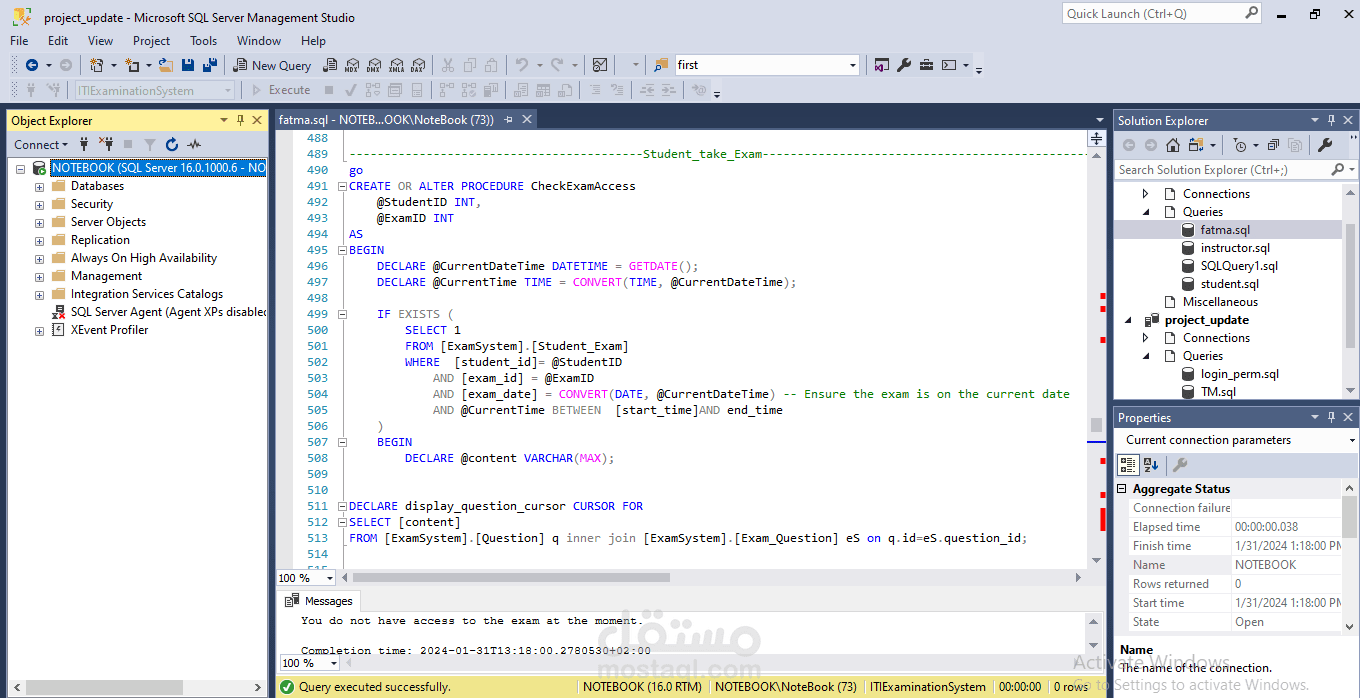Examination System Database
تفاصيل العمل
ITI Examination System Database
Designing an examination system involves creating a database to store information about exams, questions, answers, users, and their interactions. Below is a simplified description and steps to design an examination system database
Database Description:
Tables:
Users:
Fields: UserID (Primary Key), Username, Password, Role (e.g., Student, Instructor)
Exams:
Fields: ExamID (Primary Key), ExamTitle, Duration, StartTime, EndTime
Questions:
Fields: QuestionID (Primary Key), ExamID (Foreign Key), QuestionText, QuestionType (e.g., Multiple Choice, True/False)
Options:
Fields: OptionID (Primary Key), QuestionID (Foreign Key), OptionText, IsCorrect
Responses:
Fields: ResponseID (Primary Key), UserID (Foreign Key), ExamID (Foreign Key), QuestionID (Foreign Key), SelectedOptionID, Score
Relationships:
Users.UserID is related to Responses.UserID.
Exams.ExamID is related to Questions.ExamID and Responses.ExamID.
Questions.QuestionID is related to Options.QuestionID and Responses.QuestionID.
Options.OptionID is related to Responses.SelectedOptionID.
Steps to Implement:
Identify Requirements:
Understand the specific requirements of your examination system.
Define entities and their relationships.
Create Database:
Choose a database management system (e.g., SQL Server, MySQL, SQLite).
Create a new database (e.g., "ExaminationSystemDB").
Create Tables:
Implement the identified tables with their fields.
Set primary and foreign keys appropriately.
Use appropriate data types (e.g., INT, VARCHAR, DATETIME).
Establish Relationships:
Define foreign key relationships between tables.
Populate Tables:
Insert sample data for testing and development.
Write Queries:
Create SQL queries for common operations (e.g., retrieving exams, saving responses).
Create Stored Procedures (Optional):
For complex operations, consider using stored procedures.
Implement User Authentication:
Implement a secure user authentication system.
Hash and salt passwords.
Develop Application:
Create a front-end application (e.g., web or desktop) to interact with the database.
Implement user interfaces for exam creation, taking exams, and viewing results.
Final Result:
User Interface:
Students can log in, view available exams, and take exams.
Instructors can log in, create exams, and view exam results.
Database:
Stores user information, exam details, questions, options, and user responses.
Supports secure user authentication.



